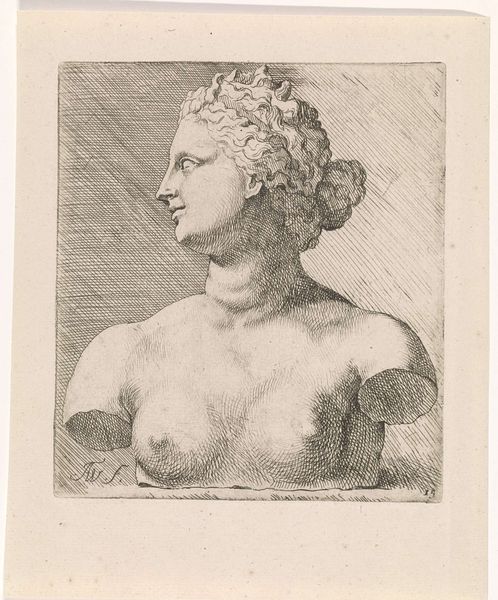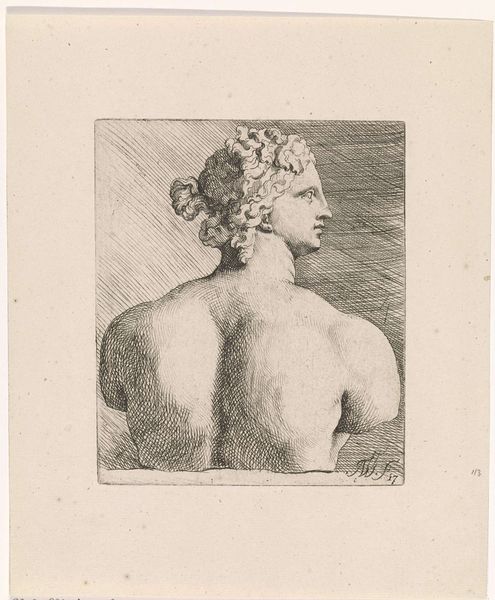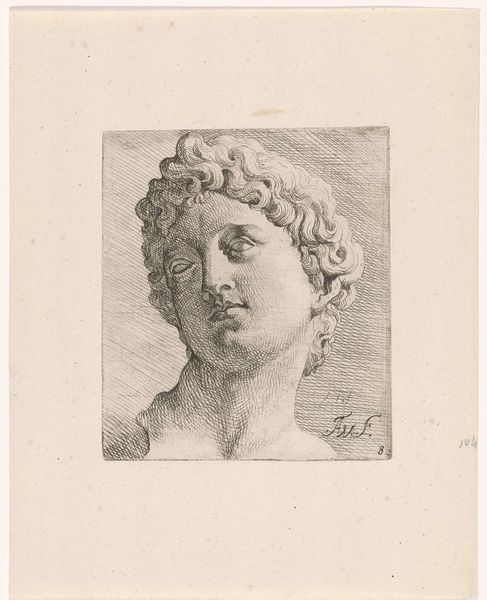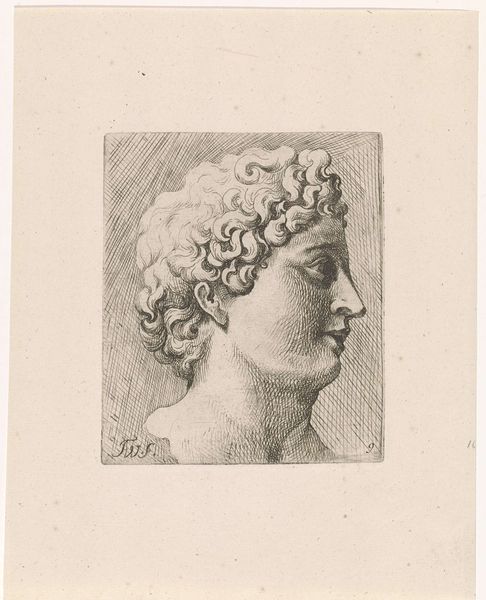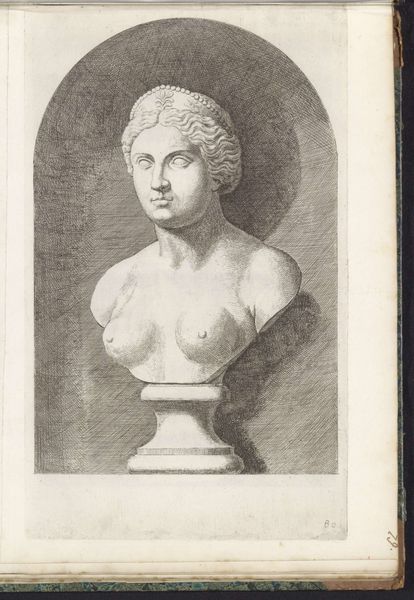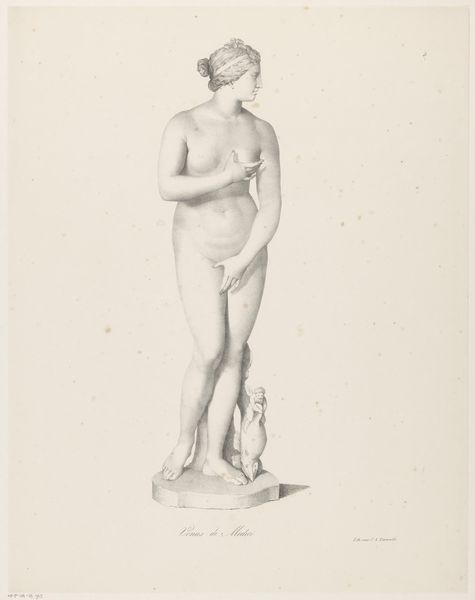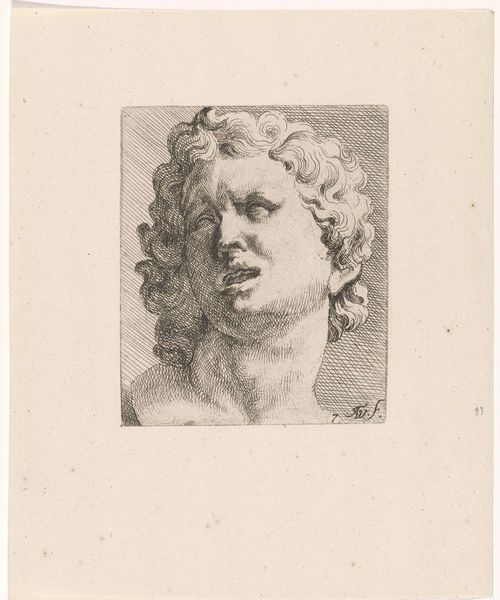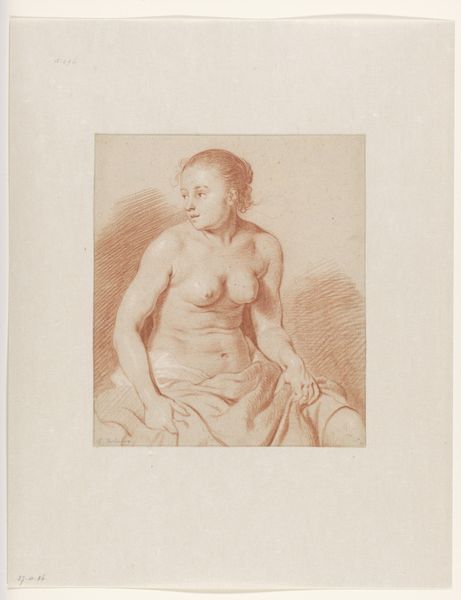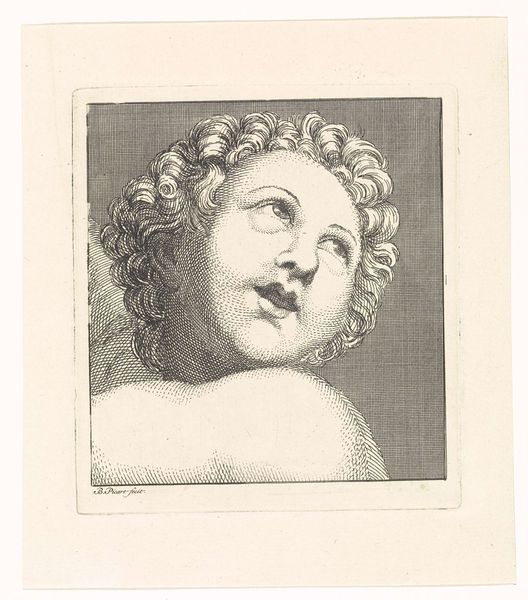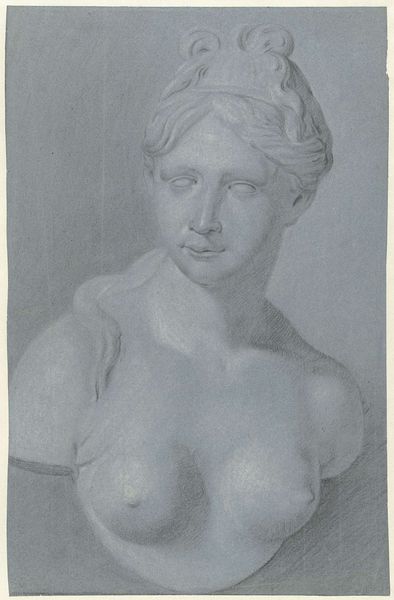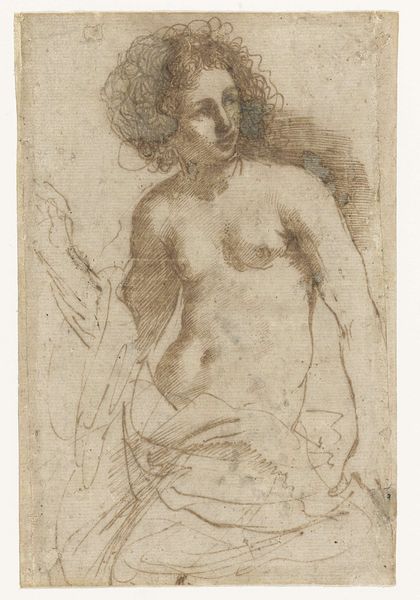
print, etching, sculpture, engraving
#
portrait
#
baroque
# print
#
etching
#
old engraving style
#
classical-realism
#
sculpture
#
history-painting
#
engraving
Dimensions: height 135 mm, width 116 mm
Copyright: Rijks Museum: Open Domain
Curator: This etching presents a bust of the Venus de' Medici, rendered by Augustinus Terwesten sometime between 1672 and 1711. Editor: There's an almost ghostly quality to this image, isn't there? The stark lines against the white paper, the classical subject rendered in such a way—it feels very much of its time, while referencing antiquity. Curator: Indeed. The print acts as a reproduction, circulating the imagery of this famous marble sculpture— the Venus de’ Medici. It speaks to the power of printmaking as a medium, capable of disseminating classical ideals. Consider the skilled labor required to produce the copperplate, and the mechanics of image transfer to paper. Editor: That’s an interesting point, but it also seems important to recognize that by reproducing this sculpture as a print, Terwesten also engaged with existing power structures and class dynamics of 17th-century Europe. The print, after all, would be consumed, and such images were a marker of taste and affluence, and a way of showcasing classical interests within a very particular societal context. Curator: Certainly, and the context in which this artwork would be encountered plays a part in how it functions. These classical allusions have historically carried social and political meanings as a symbol of power, beauty, and wealth. Note the meticulous lines forming shadows and the sense of three-dimensionality. Editor: Seeing it reproduced as a print flattens the sculpture, altering its meaning in a way, shifting its essence into a representation accessible to a wider audience through the market. Curator: So it does. Through its making and circulation, Terwesten’s print made classical art available to new eyes and, I agree, created an item available for distribution that spoke to different tastes and purposes than the original sculpture ever could. Editor: Absolutely. By re-evaluating this reproduction within historical and social spheres, we shed light on its broader significance and impact. Curator: It’s been helpful for me to see this reproduction again through the lens of consumption and societal structures. Editor: And for me to reflect on the labor required for production!
Comments
No comments
Be the first to comment and join the conversation on the ultimate creative platform.
